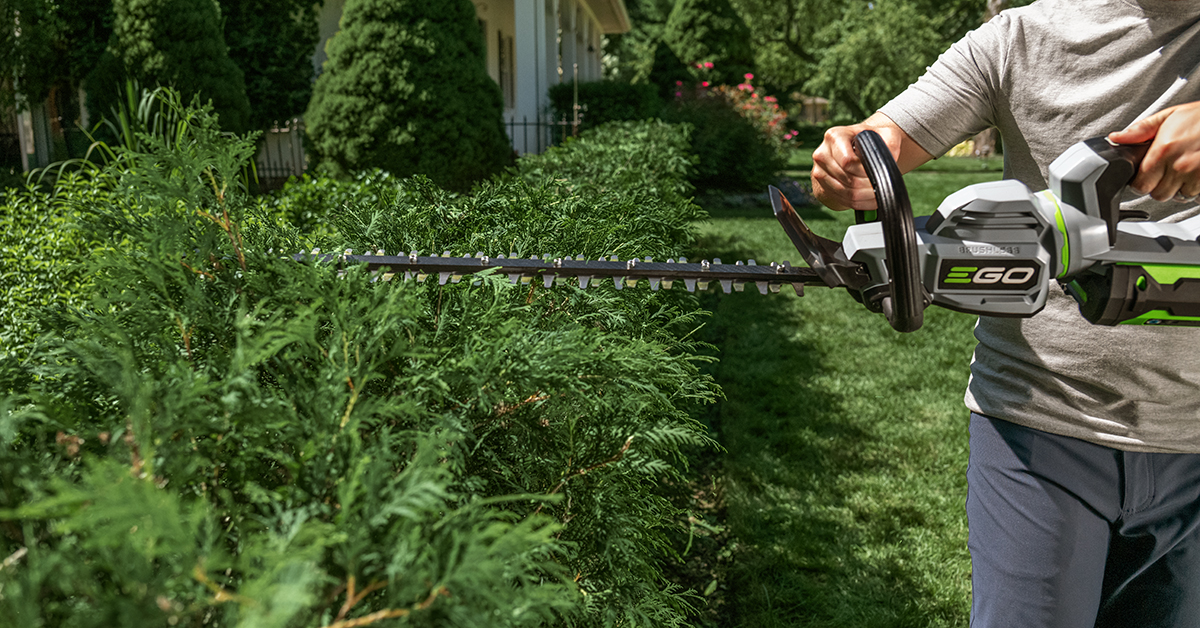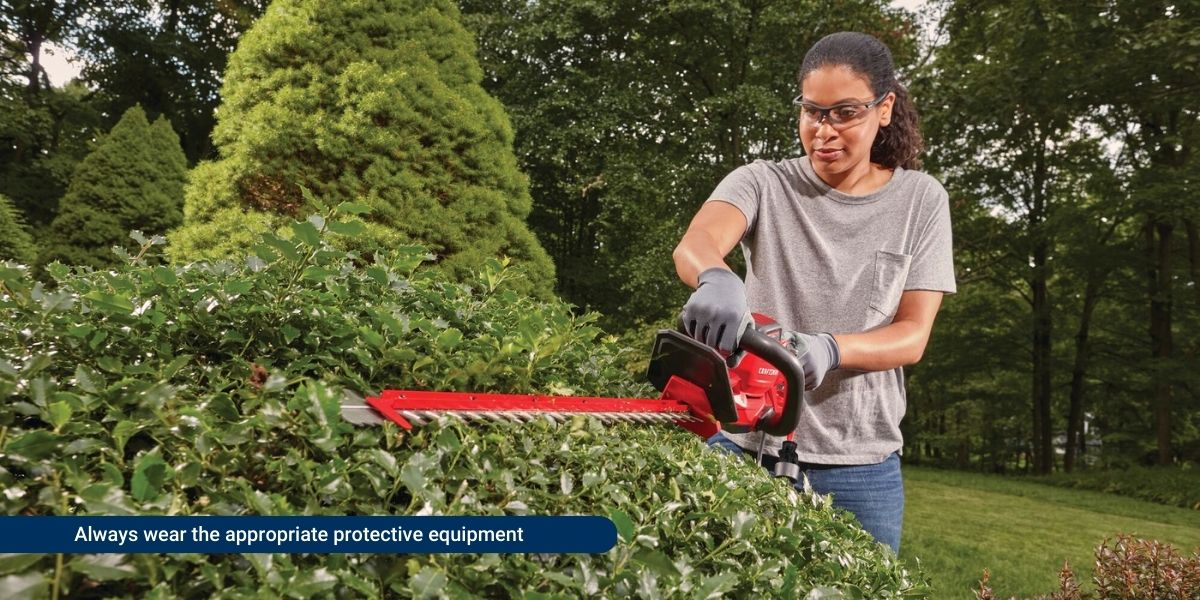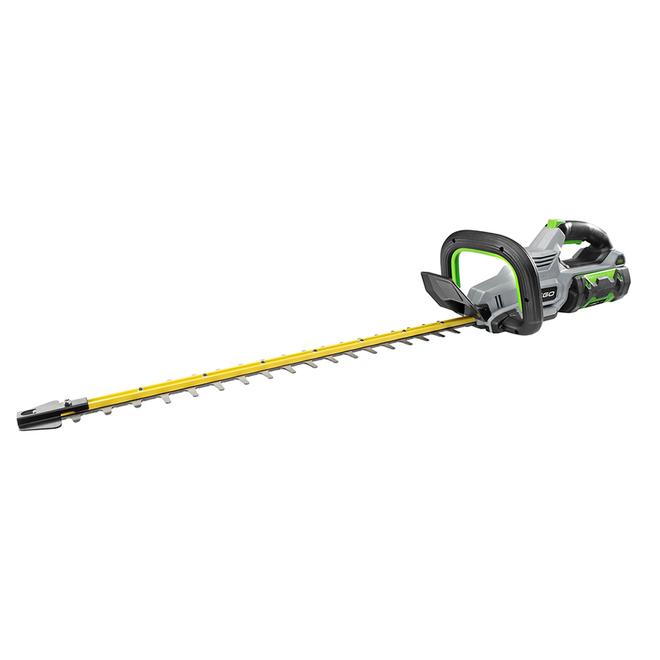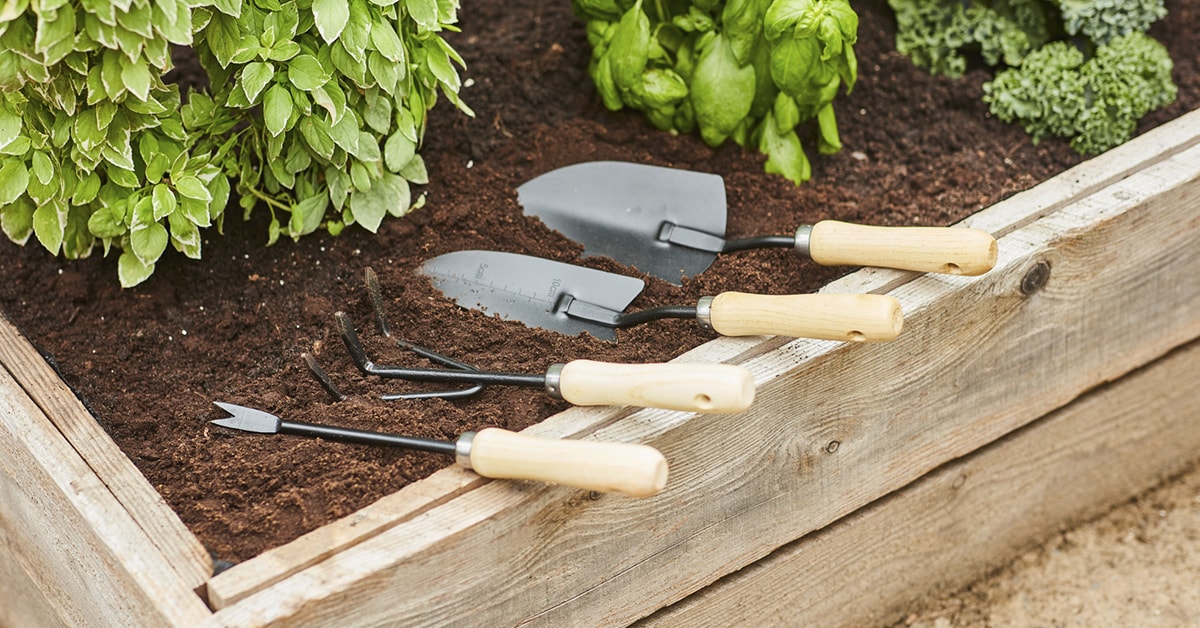
Updated on January 18, 2024
Choose the Right Hedge Trimmer for Your Yard Work
Here are general information and useful tips to help you choose a hedge trimmer of the right type and size. Whether you’re looking for a model that’s designed for intensive work or occasional homeowner use, rejuvenation pruning or detailed landscape trimming, we have everything you need.
Types of Hedge Trimmers Available
Cordless Hedge Trimmer
Corded Hedge Trimmer
Gas Hedge Trimmer
Compare the Different Types
|
|
Features |
Pros |
Cons |
Maintenance |
|
Cordless Hedge Trimmer |
· Electric start button · Functions with rechargeable batteries; the batteries need to be recharged regularly and often take 12-24 hours to recharge |
· Works for small and large projects/yards · Easy to start · Light and quiet. · No emanations |
· Use duration is limited by of the size of the battery · Light to medium motor power |
· Needs very little maintenance · Clean the blades and apply lubricant oil after each use |
|
Corded Hedge Trimmer |
· Electric start button · Choose an extension according to the manufacturer’s recommendations and the appropriate length for the grass and project type |
· Avoids using non-renewable energy sources (gas) · Produces less greenhouse gas emissions and air polluting discharges than conventional models · Easy to start. · Light, quiet, and easy to manipulate · Reduces end-of-life impacts |
· Low to medium motor power · The length of the wire is limiting |
· Electric-powered machines need very little maintenance, and are easy to start up · Clean blades and apply lubricant oil after each use |
|
Gas Hedge Trimmer |
· Pull-start · A select few models have an electrical start button |
· Functions with a gas and oil mixture and therefore emits fumes · Appropriate for damp weather and offers total freedom of movement due to the absence of an electrical cord · Appropriate for small and large projects/yards · Heavy-duty motor power |
· Very heavy · Loud |
· Clean blades and apply lubricant oil after each use · Needs fuel-mixing · Have the machine tuned up yearly by a professional |

Other Hedge Trimmer Features to Consider
Blades. The blades are either stainless steel or high-carbon steel; with carbon-steel the more durable material. Blade lengths vary from as little as 6" to 40". Shorter blades offer the user more precision while longer blades allow for greater cutting capacity. The amount of blade gap determines the size or diameter of the branch that can be cut (e.g., if the gap is ¾", then the branch diameter it can cut is also ¾"). Finally, hedge trimmers come with either single-sided teeth (safer because they are always cutting away from the user’s body) or double-sided teeth (more efficient at cutting larger hedges).
Ergonomic Design. A variety of handles are available based on the size and type of the task as well as for the specific needs of the user. Adjustable handles allow the user to trim with more comfort, safety, and control. Some models even have a rotating handle or multiple handles, for added control.
Pole Hedge Trimmers. There are pole hedge trimmers and models with a telescopic handle available on the market. They allow the user to easily trim high and wide bushes and shrubs.
Articulating Head. A very useful functionality, the articulating trimmer head can be adjusted to different positions, allowing you to trim at multiple angles.
Weight. Gas-powered hedge trimmers tend to be heavy, while electric-powered models are lightweight. Using a lightweight model can make the trimming projects more manageable and precise.
Lock-on Feature. The lock-on feature allows the user to accomplish a large task without needing to keep the trigger pushed in. The user’s mechanical efforts are therefore minimized.
Translucent Fuel Tank. When using the hedge trimmers for an extended period, a translucent fuel tank may be practical, as it allows the user to quickly assess the fuel level.
Pro Tip
If the user is left-handed, then double-sided teeth blades are recommended.

Tips for Pruning and Trimming Like a Pro
- Carry the hedge trimmer by the handles; turn the hedge trimmer off when walking around.
- Before turning on the hedge trimmer, hold both handles, one in each hand. Stand firmly when trimming and make sure to wear safety equipment such as protective eyewear, hearing protection, gloves, and footwear.
- If trimming the tops of hedges, begin by using a wide, sweeping motion with a slight downward tilt. Trimming new growth from hedges should be fairly effortless.
- If trimming the hedges level is an issue, consider using a levelling string. Stretch the string out along the length of the hedge in the front of the shrubs to use as a guide.
- When trimming the sides of a hedge, begin from the bottom and sweep upwards.
- At all times, plan the trimming motions before beginning the work. Keep all the trimming activities within reach.
Pro Tip
Avoid trimming any branch that may have a diameter of ¾” or more as most residential shrub trimmers are not designed for anything larger.

How to Safely Use a Hedge Trimmer
Various safety features are available to protect both the user and children from harm. Since the blade moves quickly, it is important to be aware of potential accidents.
Keep safety issues in mind when selecting a model:
- Tooth extensions protect the user’s legs and body from contact with the teeth.
- Some models allow the power to the blade to stop as soon as the trigger is released.
- Other models have front-handle shields to protect the user’s hand from slipping towards the moving blade.
- Dual switches that require two hands to operate and switches that lock in the “off” position are great child-safety features.
When pruning or trimming:
- Read the user’s manual before using the equipment and follow their safety warnings.
- Always wear protective eyewear, gloves, and non-skid footwear; wear ear protection for noisy gas models.
- If using a corded-electric model, plan the cutting so as to prevent accidentally cutting the extension cord.
- Maintain a firm grip and proper posture at all times.
- Avoid working in windy or rainy conditions.
- Keep children and pets away from the work area.
How to Maintain Your Hedge Trimmer
- Clean the machine after each use with soap and water. If the blades are sticky, use a solvent-soaked rag.
- Wipe down the blades with penetrating oil such as WD-40 after cutting.
- Hang the equipment on a wall hook for storage.
- Tune-up gas-powered models yearly either by the homeowner or by a professional.
- Purchase extra battery packs for backup power.
- Hone cutting blades yearly to make sure the leaves are clean-cut, not mangled.
- Honing powered trimmer blades must be done professionally.






















